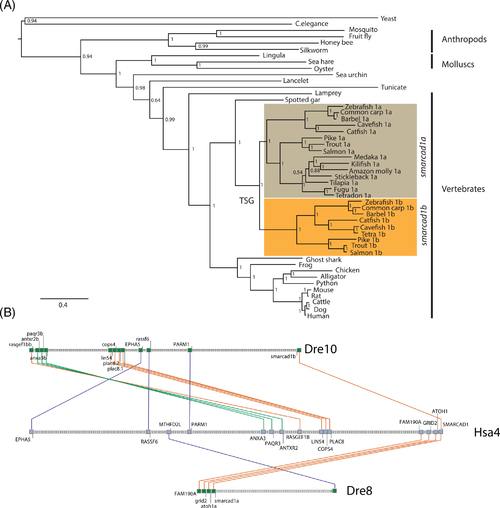Fig. 2
|
Zebrafish have two smarcad1 genes. (A) Extended majority-rule consensus tree for the Bayesian phylogenetic analysis of SMARCAD1 proteins. Numbers at each node indicate posterior probability (pp) values based on 20 million runs. Branch lengths are proportional to the means of the pp densities for their expected replacements per site. The ME and ML phylogenetic trees (Figures S1 and S2) were generally in agreement with the BP phylogeny: most of the metazoan species have one SMARCAD1 gene, while there are usually two smarcad1 genes in teleost genomes. The two smarcad1s most likely resulted from teleost-specific whole-genome duplications, as each formed a distinct clade. The tree was rooted with yeast. (B) Syntenic relationship between human and zebrafish chromosomes. Zebrafish chromosome 8 (Dre8) that contains smarcad1a and three other genes (FAM190A, GRID2, and ATOH1, bottom row) are orthologous to, and in the same order as, genes in the portion of human chromosome 4 (Hsa4) that contains SMARCAD1 (middle row). A portion of Dre10 contains smarcad1b, but not the other three directly linked genes. However, this part of Dre10 is co-orthologous to the portion of Hsa4 that contains SMARCAD1, as they share other syntenies (top row). Orthologous genes are indicated with colored lines |

